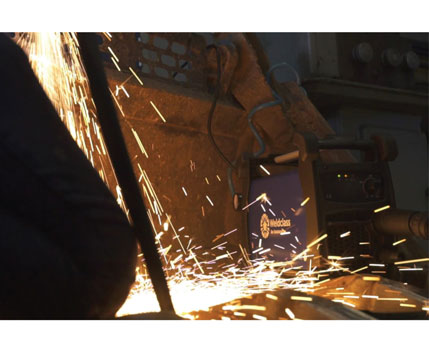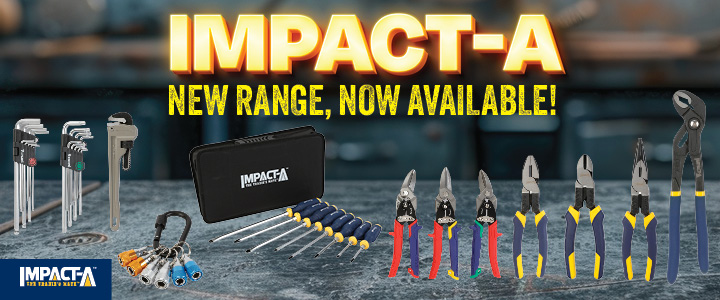One of the ways you can judge how well a welding machine will perform is by looking at its duty cycle.
Duty cycle is the percentage of time that a machine will safely operate (or weld) within a certain time period, at a given amperage. For example, the Weldforce WF-205MST multi-function welder has a duty cycle of 200 Amps @ 30%. This means that it will operate at 200A for 3 minutes within a 10-minute time period. For the remaining time, the machine will switch to thermal overload to cool down.
All welding machines are (or should be) fitted with thermal overload protection which means the machine will cut out when internal critical components reach a certain temperature, to prevent damage. The machine will then re-start when it returns to a safe temperature. Duty cycle will change at different amperages. At higher amperage output the machine will heat up more rapidly, and the duty cycle will reduce. At lower amperages, the duty cycle will increase.
For example—if we look at the WF- 205MST machine again;
Duty cycle at 200 amps = 30%
Duty cycle at 145 amps = 60%
Duty cycle at 110 amps = 100%
IS DUTY-CYCLE THE BEST WAY TO JUDGE THE PERFORMANCE OF A WELDING MACHINE?
The answer to this question is both yes and no! Duty cycle rating—providing that it is accurate and not over-rated (as is sometimes the case)—is a useful indication of how a welding machine will perform in terms of output and capacity (or productivity). However, duty cycle should not be considered in isolation.
Just as you would (normally) not make a decision to purchase a motor car based only on it’s top speed (say without considering aspects like handling, acceleration, safety, etc) in the same way, there are other factors to be considered when it comes to welding machines.
Firstly, the welding process itself can alter the importance of duty-cycle. Having a higher duty cycle can be important for MIG welders but may be less important for Stick/MMA and TIG. The subject of power draw, power supply and the efficiency of the welder also add another dimension to the duty-cycle subject. This is especially the case with phase (240V) welding machines, where the machine (according to the AS60974-1 standard) must have an effective input current draw (I1eff) equal to or less than the rated power supply that the machine is designed to operate on—commonly either 10A or 15A.
Often, this requirement is the restriction (or “ceiling”) on duty-cycle, more so than what the machine is actually capable of. For example, the Weldforce WF-180MST MIG welder, has a duty cycle of 10% at maximum output of 180A. This machine is actually capable of significantly higher dutycycle, but in order to be suitable for 10A power supply the ouput and duty cycle have been restricted, or capped. This is why machines with greater efficiency offer an advantage (especially 240V 10A/15A single phase machines). Through greater efficiency they can deliver a higher output and duty cycle, from the same level of power input.
The following machines by Weldclass incorporate “PFC” technology, which greatly increases efficiency and gives them a higher duty cycle; Weldforce WF-205MST and WF-255MST MIG/Stick/TIG welders, and the Cutforce CF-45P Plasma Cutter.






